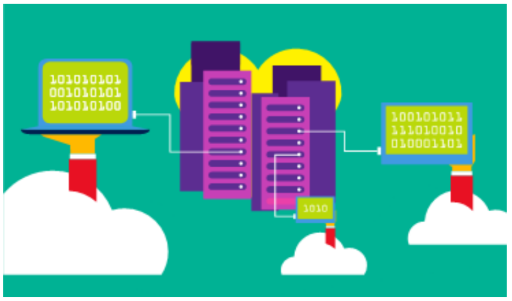Last updated on February 1st, 2025 at 12:23 am
We will discuss cloud computing, types of cloud – public, private, and hybrid, cloud model comparison, cloud benefits, and consumption-based model.
Table of Contents
1. What is Cloud Computing?
Cloud Computing is the delivery of computing services over the internet, enabling faster innovation, flexible resources, and economies of scale.
- Compute: Provide the compute power (memory and processor)
- Networking: Connection of computer together of VM.
- Storage: Store of data/information.
- Analytics: Kind of load, like how much memory is required, etc.
2. Types of Cloud
2.1 Public Cloud
- Public cloud solutions are readily available from Azure, and provide infrastructure and services to the public.
- The general public can host their services.
- Public cloud owned by cloud services or hosted provider.
- Provide resources and services to multiple organizations and users.
- Accessed via secure network connection (Internet)
- An example of a Public cloud is Azure.

2.2 Private Cloud
- Private clouds are dedicated to one organization and often have much more specific security control than Public clouds.
- Organizations create a cloud environment in their data center.
- Organizations are responsible for operating the services they provide.
- Does not provide access to users outside of the organization.
- The disadvantage of a Private cloud is the high cost.

2.3 Hybrid Cloud
- Hybrid solutions are a blend of Public and Private Clouds.
- Organizations today adopt the Hybrid model, which comes as a combination of Public and Private.
- Connecting Existing datacenter to Azure datacenter via the Internet with the help of VPN Tunnel.
- For example, the Application is hosted in the Azure data center and the Database is hosted in the Client data center.

3. Cloud Model Comparison – Public vs Private vs Hybrid Cloud
| Public Cloud | Private Cloud | Hybrid Cloud |
|---|---|---|
| No capital expenditures to scale up. | Hardware must be purchased for start-up and maintenance. | Organizations are responsible for hardware maintenance and updates. |
| Organizations are responsible for hardware maintenance and updates. | Organizations have complete control over resources and security. | Organizations determine where to run their applications. |
| Organizations pay only for what they use. | Organizations are responsible for hardware maintenance and update. | Organizations control security, compliance, or legal requirements. |
4. Cloud Computing Benefits and Considerations
4.1 Cloud Benefits
- High Availability – Application hosted into one data center and copied existing into another data center. Replicate into two different data centers.
- Scalability – Two types of Scalability: Vertical and Horizontal. Vertical scalability is a scale up/down which increases/decreases compute entity ( RAM & Processor). In Horizontal scalability, if one virtual machine is highly utilized, then traffic will shifted to another virtual machine and managed by the load balancer.
- Elasticity – Only adding the scaling is called elasticity.
- Agility – Fast to deploy virtual machine.
- Disaster Recovery – Replicate the data into another to prevent during disaster time. Easy to recover.
- Consumption-Based model – Pay as per the use.
- Cost optimization – CapEx and OpEx optimization.
- Global reach – Availability of data centers across the globe.
- Security – Secure to access and use the application.
4.2 Cloud Considerations
- Capital Expenditure (CapEx)
– Capital Expenditure are the initial investment costs made for fixed assets.
– The up-front spending of money on physical infrastructure.
– Costs from CapEx have a value that reduces over time.
– Cloud can be considered as CapEx when large one-time purchases are made for fixed assets like infrastructure for an on-premises data center (vehicles, computer servers, buildings). - Operational Expenditure (OpEx)
– Operational Expenditure is the ongoing costs associated with day-to-day operations.
– The spending and billing of services or products as needed.
– Expenses are deducted in the same year.
– Cloud can be considered as OpEx is the funds used to run day-to-day business, like a monthly cloud-based application subscription.
5. Consumption-based model
Azure or any cloud service provider operates on the consumption-based model which means end users only pay for the resources that they use. “Whatever they use it, is what they pay for”.
- Better cost prediction.
- Prices for individual resources and services are provided.
- Billing is based on actual usage.
FAQs
1. What is Cloud Computing?
Cloud Computing is the delivery of computing services over the internet, enabling faster innovation, flexible resources, and economies of scale.
Compute: Provide the compute power (memory and processor)
Networking: Connection of computer together of VM.
Storage: Store of data/information.
Analytics: Kind of load, like how much memory is required, etc.
2. Difference between Public vs Private vs Hybrid Cloud
Public cloud solutions are readily available from Azure, and provide infrastructure and services to the public. No capital expenditures to scale up. Organizations are responsible for hardware maintenance and updates.
Private clouds are dedicated to one organization and often have much more specific security control than Public clouds. Hardware must be purchased for start-up and maintenance. Organizations have complete control over resources and security.
Hybrid solutions are a blend of Public and Private Clouds. Organizations are responsible for hardware maintenance and updates. Organizations determine where to run their applications.
3. What is the Consumption-based model?
Azure or any cloud service provider operates on the consumption-based model which means end users only pay for the resources that they use. “Whatever they use it, is what they pay for”.
Better cost prediction.
Prices for individual resources and services are provided.
Billing is based on actual usage.